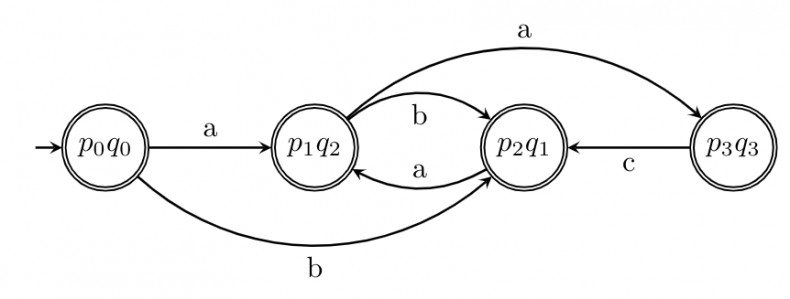Design an automaton using $P$ and $Q$ having $p_0q_0$ as start state
$\delta(p_0q_0,a) \rightarrow \delta(p_0,a) \cup \delta(q_0,a)$
$$\begin{array}{|l|l|l|l|}\hline \text{Q \ $\Sigma$} & \text{a} & \text{b} & \text{c} \\\hline \text{$\rightarrow p_0q_0^*$} & \text{$p_1q_2$} & \text{$p_2q_1$} & \text{} \\\hline
\text{$p_1q_2^*$} & \text{$p_3q_3$} & \text{} \\\hline \text{$p_2q_1^*$} & \text{$p_1q_2$} & \text{$p_3$ (No Need)} & \text{}\\\hline \text{$p_3q_3^*$} & \text{} & \text{$q_2$ (No Need)} & \text{$p_2q_1$} \\\hline \end{array}$$
In case of intersection final states are those where final states of P and final states of Q come together.
"No need" in above table mean, when we reach to $p_3$ (or $q_2$) then we cannot reach to any final state because we cannot have states of $P$ and $Q$ together (intersection). Hence, this is not shown in diagram [may draw a dead state for it to make it a DFA (as noted at end) ]
Automaton results in:

That is option A .
Note : DFA must have transition for each symbol $Q \times \Sigma \rightarrow Q$ and hence our automaton is not a DFA as we do not have transitions to dead state.